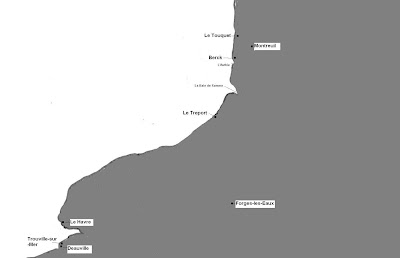 |
| The banner for the Daily Express adaptation |
Part 4 ('The mob breaks up Bond's cosy date') sees the brief appearance of Plenty O'Toole, while Part 5 ('Two wheel drive – as Bond steers to safety') describes the car chase through Las Vegas. 'Blofeld comes back from the dead' is the title of Part 6, and the final offering on Christmas Eve is 'Bond gets a kiss with several kicks', a part that, as you might guess, features Bambi and Thumper.
Despite the somewhat uneven plotting – the helicopter raid on Blofeld's oil rig is described in two short paragraphs, while Bond's tussle with Bambi and Thumper is dealt with in nine – Victor Davis' adaptation is readable and exciting (no mean feat, given the challenge of condensing the script), and replicates to some extent the literary style of Ian Fleming. The best of Davis' Fleming-esque touches can be found in Part 1. Take this paragraph, for example:
“The urgency of the call would normally have given Bond that familiar charge of excitement, a heightened sense of perception that had always gone with the knowledge that he was about to be handed a new assignment in the field.”
Or this one:
“Bond smiled thinly at remembrance of the arduous and murderous trail that had led him across the world.”Victor Davis knows his Fleming. Three years later, Bond was back in an adaptation of The Man With the Golden Gun. This time spread over five parts, the story ran from 16th to 20th December 1974.
 |
| Bond and Goodnight in the Daily Express |
Again, the sub-Fleming touches are there:
“Miss Moneypenny,far from her usual flirtatious self, ushered him straight through M's steel-plated and soundproofed door into the sanctum that the head of the British Secret Service had dressed overall more like a naval museum.
“James Bond's amused eyes passed lightly over the prints of the wooden ships of England, dashing in under French and Spanish cannon, and the rest of the mementoes, the flotsam of a distinguished seadog's life.”
Both adaptations by Victor Davis are interesting early entries in the sub-genre of continuation Bond – the film novelisation – and are well worth reading.




























